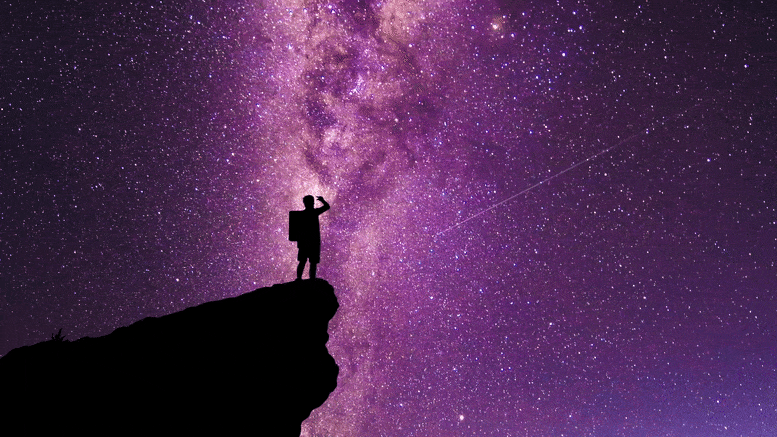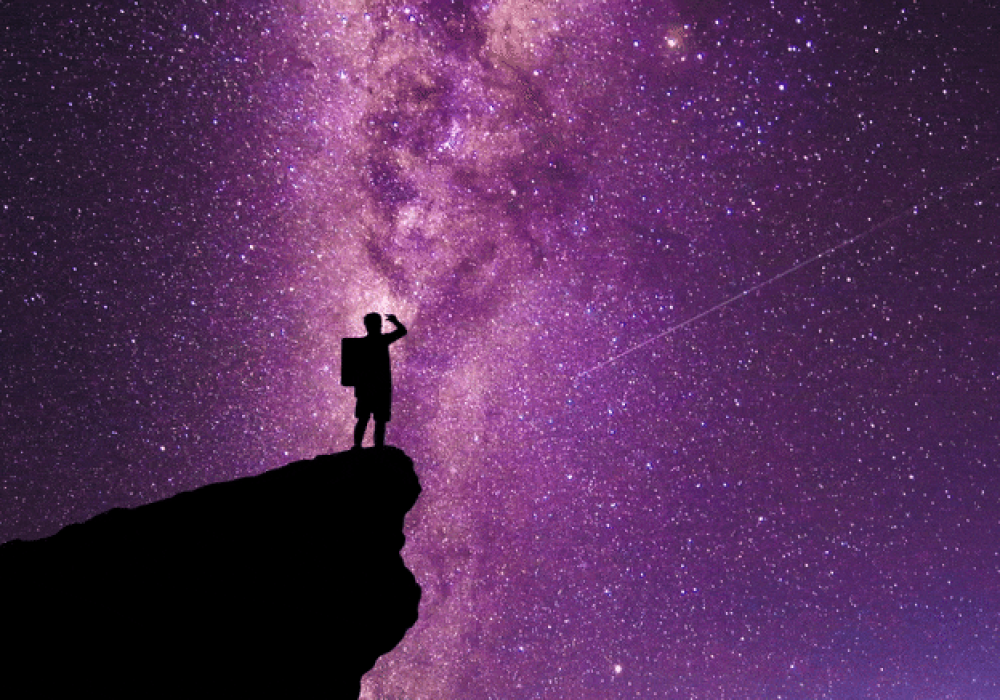What’s Up for January? New year, new Moon; midnight meteors; and Mars rises.
January begins with a new moon on the 2nd. And that means the first week of the month is ideal for stargazing because the few days before and after the new moon are the darkest. Head outside around 8 or 9 p.m. all week and look southward to be dazzled by all the bright stars of the Winter Circle, along with the Pleiades, and Orion.
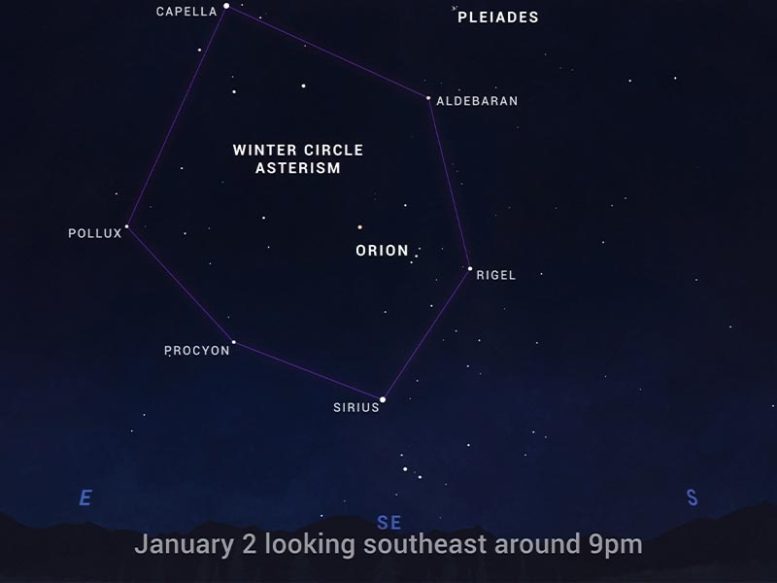
The couple of days around January 2 new moon phase are ideal for stargazing, as there’s no bright moonlight to interfere with the fainter stars. This sky chart shows how the bright stars Winter Circle will appear mid-evening. Credit: NASA/JPL-Caltech
The Quadrantid meteor shower peaks on the night of January 2nd and the morning of the 3rd. This tends to be one of the better meteor showers of the year, and often produces a number of bright meteors called fireballs. This year the peak coincides with the new moon, making for great viewing conditions, provided the skies are clear. You should be able to see a few meteors on the couple of nights before and after as well.
For the best Quadrantid meteor viewing, find a dark location away from bright city lights, point your feet roughly toward the northeast, and look up. The meteors appear to radiate from the constellation Boötes, which includes the bright star Arcturus. (But they can appear anywhere in the sky!) Generally, the best viewing will be after midnight, once Boötes rises above your local horizon. The source of the Quadrantids is thought to be the asteroid 2003 EH1, which might actually be an extinct comet. So start off your new year by catching a few shooting stars after midnight on January 3rd.
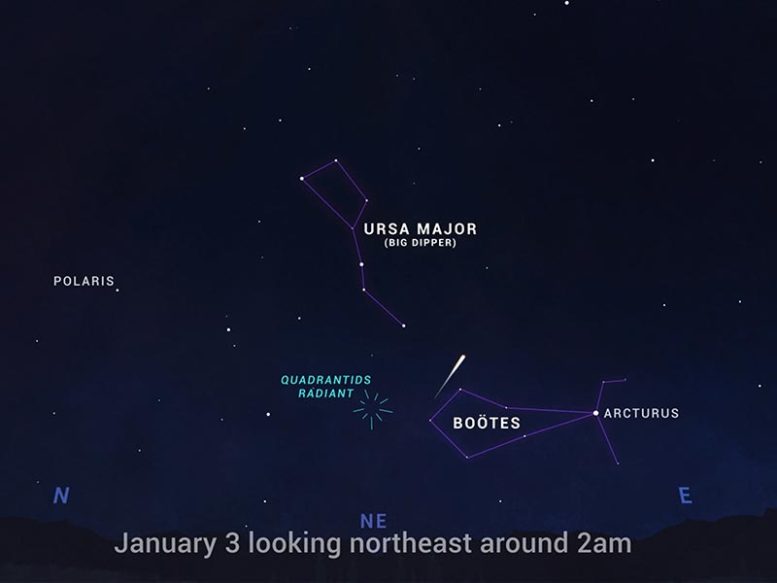
The Quadrantid meteors appear to radiate from the constellation Boötes, which rises around midnight local time. Credit: NASA/JPL-Caltech
Finally, a couple of highlights at dusk and dawn. On January 5th, look to the southwest after sunset to find the crescent Moon in a close pairing with brilliant Jupiter. The two will be only about 4 degrees apart, which should make them appear together through most binoculars.
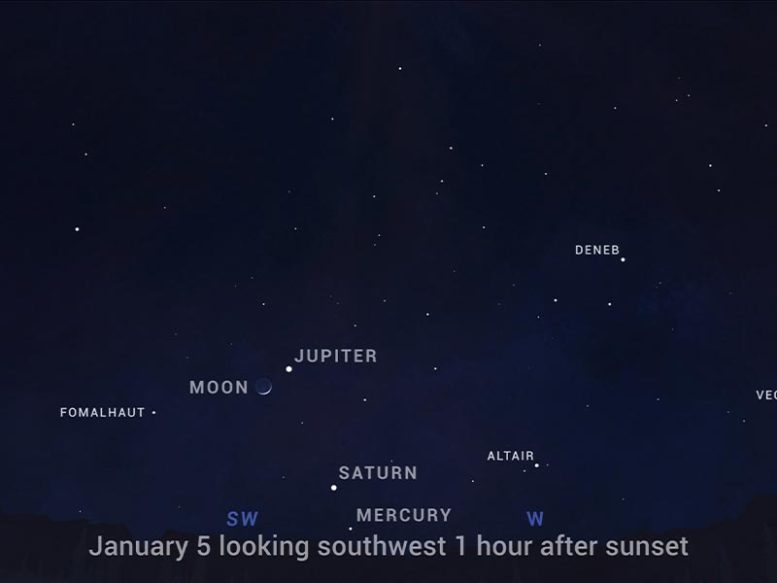
Find the crescent Moon only about 4 degrees away from Jupiter on January 2. Credit: NASA/JPL-Caltech
Then at the end of the month, on January 29th, if you happen to be up early, you can catch sight of the Moon near the Red Planet. Joining the pair in the southeastern sky will be Venus. Having left the evening skies last month, Venus is now rising before the Sun as the “Morning Star.” Now, Mars is slowly returning to view after passing behind the Sun over the past few months. In fact, NASA stops communicating with our spacecraft at Mars for about 2 weeks every two years, when the planet is directly opposite the Sun. That event, called solar conjunction, took place back in October.
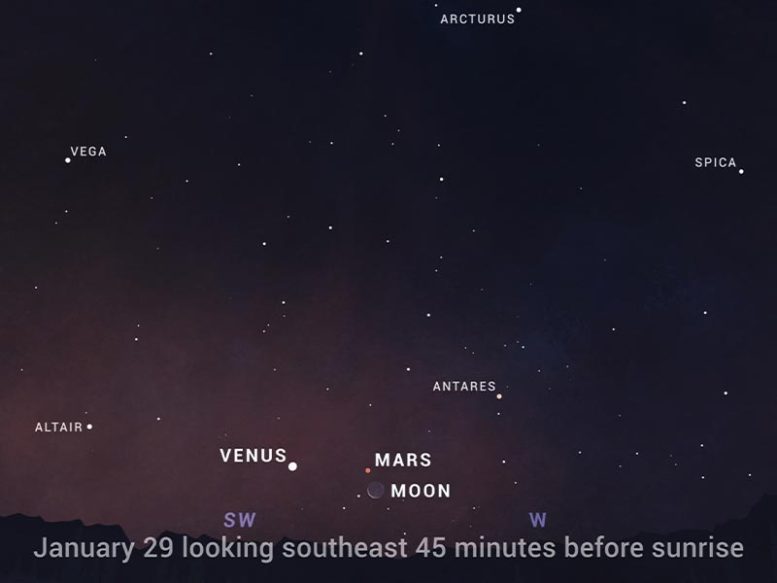
Mars and Venus return to the morning sky in January. Find them with the Moon on the 29th. Credit: NASA/JPL-Caltech
Mars will continue to brighten and climb higher over the next few months, where it’ll have super-close conjunctions with Saturn and Jupiter, which we’ll tell you about in future videos, so stay tuned!
Preston Dyches, Christopher Harris, and Lisa Poje are the science communicators and space enthusiasts who produce this monthly video series for NASA at the Jet Propulsion Laboratory. Additional astronomy subject matter guidance is provided by Bill Dunford, Gary Spiers, and Lyle Tavernier.

